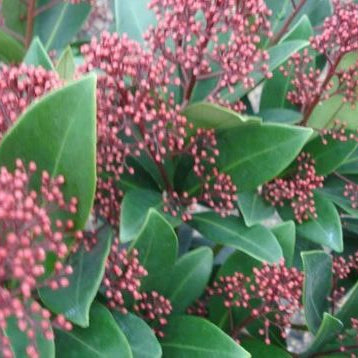
Free Delivery £400+*
Hedging, Tree, Shrubs & more
Free Delivery £400+*


Root balled hedging is a great way to get large hedging plants for less of an outlay. They are dug from the fields where they grow much fatter than grown in containers. Root balls are dug from November but you can order them now. We will advise you on the optimum timing of the start of digging. You can trust us and we can work together to get you the best chance possible for success. If the Balls can not be dug and dispatched within a few days, as a further insurance they don't dry out, we pot them into compost to keep the balls nice and damp.
You always lose one or two to transport shock, so you should allow for the possibility of buying replacements if you do lose any, but it's well worth the risk as the same plants pot grown are far more money and you need more of them to achieve the same result. The following are a few tips that should help you minimise this risk. We do not offer guarantees with plants, so read up as much as you can and you should have great success.
Please take a look at our Root Ball digging process below:
To plant the root balls, keep the sacking on them as the roots will grow through it and the sacking is biodegradable.
Dig the hole like normal, making sure the soil is nice and loose, so the water can drain through.
Place the plant in the hole making sure it is upright, placing the root ball, so it is level with the ground - not too low and not too high - back fill with the soil or compost firming it down to make sure there is good contact with the soil in your garden.
Once planted you should ensure the plant is not going to rock in the wind, if this is going to happen then you should secure the plant with a stake and a suitable tie.
Planting Root Balls To plant the root balls, keep the sacking on them as the roots will grow through it and the sacking is biodegradable.
Dig the hole like normal, making sure the soil is nice and loose, so the water can drain through.
Place the plant in the hole making sure it is upright, placing the root ball, so it is level with the ground - not too low and not too high - back fill with the soil or compost firming it down to make sure there is good contact with the soil in your garden.
Once planted you should ensure the plant is not going to rock in the wind, if this is going to happen then you should secure the plant with a stake and a suitable tie.
Give it a good soaking at the base, not all over the leaves, and keep it moist, not soaking wet, for the next growing season. It's not necessary to water the plants when it is raining every day, but if there is no real natural water for a week or so then give them a good soak two or three times a week with a bucket of water each. When they have been in for a week or two, just before you water them, have a feel alongside the new plants, down to base of the rootball to see how dry or wet it feels. If you can squeeze water out of a fist full of soil they are too wet. As soon as they are growing away nicely you reduce the watering to a visual look at the plants and they will look thirsty when they need a good soak. A month to six weeks after planting you should be able to relax the watering right off. If you leave planting your rootballed stock late in the season, say March, then you may need to step up the water to every day for the first 2 weeks especially if those drying east winds are happening. If you are concerned ask one of our experts.
On certain hedging types such as Yew, then its wise to water the foliage as well, this will help prevent the foliage from dessicating in strong winds
You must keep away any unwanted grass and weeds from the new plants as they will take all the moisture and food.

If you have any questions regarding any of the tips seen in this blog do not hesitate to call ourselves or email us at support: 01565 722766 or support@grasslands.co.uk
Brenelia is a very hardy form of portuguese laurel that also grows a little faster, in a very tidy manner with much redder stems. More graceful in...
View full detailsThe posh form of laurel hedging. They cost a little more than common laurel but they are more graceful in appearance with purple shoots and finer l...
View full detailsPrunus lusitanica Angustifolia - Portuguese Laurel are fantastic laurels that are a great alternative to the classic cherry Laurel. They are more f...
View full detailsClassic laurel hedging. It's the country's favourite hedging shrub. Lovely luxurious evergreen bright green leaves. Grows easily in all soils excep...
View full detailsClassic laurel hedging. It's the country's favourite hedging shrub. Lovely luxurious evergreen bright green leaves. Grows easily in all soils excep...
View full detailsPrunus lusitanica Angustifolia - Portuguese Laurel are fantastic laurels that are a great alternative to the classic cherry Laurel. They are more f...
View full detailsPrunus Lusitanica - Portuguese Laurel are fantastic laurels that are a great alternative to the classic cherry Laurel. They are more formal in appe...
View full detailsClassic laurel hedging. It's the country's favourite hedging shrub. Lovely luxurious evergreen bright green leaves. Grows easily in all soils excep...
View full detailsClassic laurel hedging It's the country's favourite hedging shrub. Lovely luxurious evergreen bright green leaves. Grows easily in all soils excep...
View full details